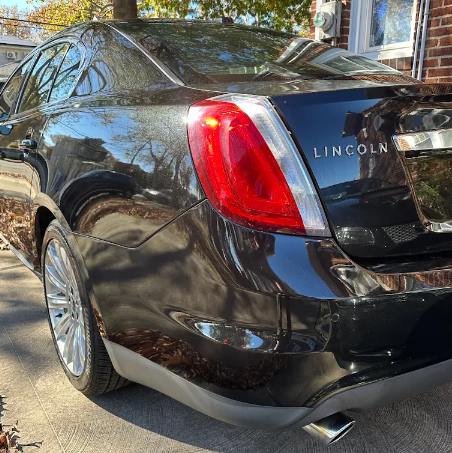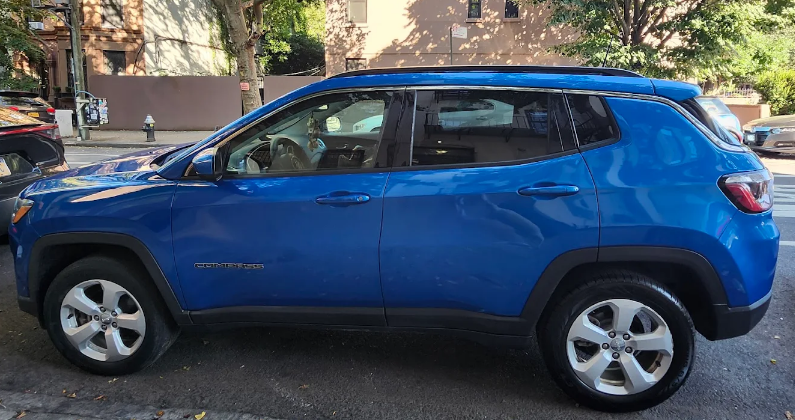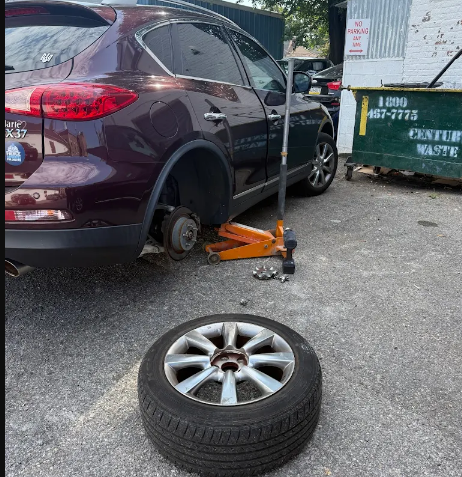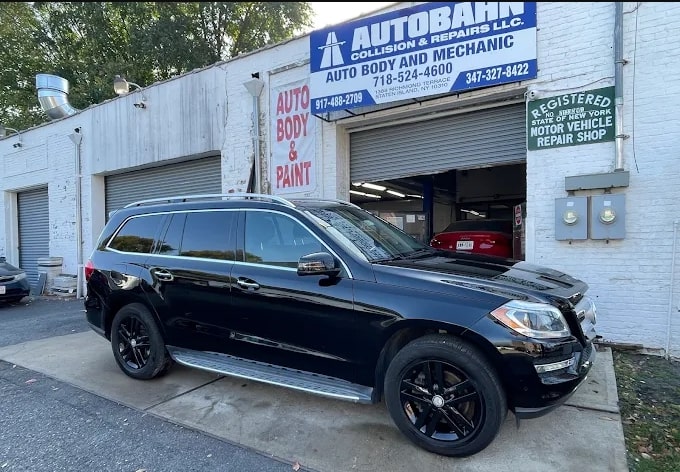Understanding Car Dents and Scratches
Minor dents and scratches are the inevitable badges of everyday driving. They can occur from door dings, hail, pebbles, or careless parking moments. Most car paints are made up of four essential layers — clear coat, color coat, primer, and metal base — and the repairability depends on which of these layers has been affected. When the paint remains intact, many damages can be restored without repainting.
What Causes Minor Dents and Scratches
Everyday causes include impacts from other car doors, small collisions, debris on highways, or shopping carts in parking lots. Environmental elements such as hail or falling branches can also dent metal panels. Scratches often occur from keying, automatic car washes, or abrasive cleaning materials.
How Paint Layers Protect Your Car’s Body
The clear coat acts as the first line of defense, protecting against UV rays and oxidation. Beneath it, the base color adds aesthetic value, while the primer secures paint adhesion. If the clear coat alone is damaged, repairs can often be made without affecting the underlying paint.
When You Can Avoid Repainting
Repainting isn’t always necessary. If no bare metal or primer is visible and the damage hasn’t cracked the paint, you can choose alternative repair methods like Paintless Dent Repair (PDR) or polishing. Surface-level scratches that don’t catch your fingernail and shallow dents with fully intact paint are the best candidates for no-paint restoration.
Assessing the Severity of Car Damage
To evaluate whether repainting is necessary, run your fingertip over the damaged area. Light scuffs that feel smooth usually only affect the clear coat. Deep grooves that catch your nail might require advanced polishing or filler application.
Clear Coat vs. Deep Paint Damage: What’s the Difference
Clear coat scratches appear dull but don’t expose the color beneath. Deep scratches cut through multiple paint layers or reach bare metal, risking oxidation or rust. While clear coat scratches polish away easily, deeper damage demands repainting for longevity.

Paintless Dent Repair (PDR): The Preferred Solution
PDR is the leading technique for fixing small dents without harming paint. Skilled technicians use rods or glue tabs to push or pull dents from behind, restoring the panel’s shape seamlessly. It’s often used for hail, parking lot mishaps, or bodyline dents.
How Paintless Dent Repair Works
PDR relies on massaging the metal back into place from behind the panel. Technicians gain access by removing trim pieces or using adhesive pullers on the surface. Heat is sometimes applied to make metal more flexible, preventing paint cracking and distortion.
Advantages of PDR Over Traditional Repairs
PDR is faster, more affordable, and eco-friendly. Traditional methods require sanding, priming, and painting — all of which take time and can affect resale value. With PDR, the factory paint finish remains untouched, maintaining your car’s original appearance.
Types of Dents That Qualify for PDR
- Small, smooth door dings
- Shallow hail damage
- Creases that haven’t broken the paint
- Plastic bumper dents that can be softened and reshaped
Removing Scratches Without Repainting
Minor surface scratches that only penetrate the clear coat can often be completely removed through a careful polishing or compounding process. Professional-grade scratch removal products use ultra-fine abrasives to smooth out surface imperfections, blending them seamlessly with the surrounding paint and restoring the vehicle’s original luster. Regular maintenance polishing can also help prevent oxidation and extend the clarity of the finish over time.
Types of Car Scratches Explained
Clear coat scratches affect only the surface layer and are the simplest to remove with basic polishing techniques. Base coat scratches penetrate the color layer beneath, exposing slight color variations and requiring more skill to correct. Primer or metal-deep scratches are the most severe, reaching below the paint layers and often necessitating full panel repainting or touch-up work to prevent rust and corrosion.
Using Scratch Remover Compounds and Polishes
To repair clear coat damage, apply a small amount of scratch remover compound onto a clean microfiber cloth or foam pad. Use gentle, circular motions to buff the scratched area, allowing the abrasives to gradually level the surface. Once the imperfection fades, seal the area with a protective wax or paint sealant to restore shine and shield against future wear.
Buffing and Polishing Techniques for Clear Coat Repair
For best results, use a dual-action polisher fitted with a soft foam pad and a fine-grit compound at low speed to evenly distribute pressure. Avoid applying excessive force, which can overheat the paint or cause “burn” marks. After correction, finish the process with a high-quality polish designed for clear coats to enhance depth, gloss, and long-lasting reflection.

When You Need Professional Assistance
If the damage on your vehicle reaches the primer layer, shows signs of rust, or exposes bare metal, it’s best to consult a professional. Skilled technicians can assess whether a hybrid repair using Paintless Dent Repair (PDR) and precision touch-up painting is suitable. In cases where the damage spans multiple panels or covers a large area, a complete repaint may be necessary to restore a seamless finish.
Signs a Scratch or Dent Requires Repainting
- Exposed metal or primer
- Flaking or peeling paint around the scratch
- Significant creases or folds in the panel
Cost and Time Comparison: DIY vs. Professional Fixes
| Repair Type | Average Cost | Completion Time |
| PDR (Small Dent) | $100–$300 | 1–3 hours |
| DIY Scratch Kit | $20–$50 | 1 hour |
| Traditional Repainting | $400–$1,000+ | 2–5 days |
Preventing Future Dents and Scratches
Preventing new damage not only saves time and money but also maintains your car’s long-term value. Consider applying a high-quality ceramic paint coating to shield the paint from small impacts and environmental elements. Whenever possible, park away from tight spaces or shopping carts, and always wash your car using gentle microfiber cloths to avoid surface abrasions.
Protective Coatings, Car Covers, and Parking Tips
Using paint protection film or durable sealants adds an extra layer of defense, especially on high-impact zones like door edges, mirrors, and bumpers. A fitted car cover can also guard against dust and minor contact damage. Try to park in shaded, open areas or further from entrances where fewer vehicles and foot traffic reduce the chance of accidental dents.
Safe Washing Techniques to Avoid New Scratches
When cleaning your vehicle, steer clear of abrasive brushes or harsh detergents that can dull the finish. Instead, use the two-bucket wash method—one for soap and one for rinsing—to minimize grit transfer. Finish with a soft air dryer or plush microfiber towel to eliminate water spots and maintain a flawless, swirl-free shine.
Latest Trends in 2025 Car Repair Technology
The auto repair industry in 2025 is being reshaped by mobile, digital, and AI-driven solutions. Mobile PDR (Paintless Dent Repair) units now integrate smart diagnostics and on-the-spot calibration tools for faster, more accurate work. Heat induction systems and intelligent surface scanners ensure repairs are nearly invisible, maintaining a vehicle’s factory finish with minimal intervention.
Smart Repair Systems and Mobile Dent Technicians
Portable smart repair systems have become a standard offering for both individual vehicle owners and fleet managers. Mobile dent technicians equipped with AI-powered scanners can assess and restore panels within hours, often right at the client’s doorstep. This mobility not only increases convenience but also reduces downtime and costs associated with traditional shop-based repairs.
Eco-Friendly Car Care and Paint Technology
Sustainability is now a top priority, driving innovations in green repair materials and coatings. The use of biodegradable adhesives, water-based paints, and low-VOC compounds reduces environmental impact while maintaining professional-grade results. Smart coatings with self-healing properties respond to heat or sunlight to repair tiny abrasions, extending the life and shine of automotive finishes.

Step-by-Step “No-Paint” Repair Checklist
- Wash and dry the vehicle thoroughly
- Inspect damage depth carefully
- Test for paint integrity (no chips or cracks)
- Apply heat-and-cool or suction repair
- Polish and seal with a protective coat
Common Mistakes to Avoid During DIY Repairs
- Using kitchen tools or metal scrapers
- Overheating panels
- Applying heavy pressure when buffing
- Skipping aftercare like waxing and sealing
Frequently Asked Question
Can clear coat scratches really disappear with polishing?
Yes. Polishing can effectively remove light clear coat scratches by leveling the surface layer, restoring gloss and smoothness. However, if the scratch penetrates deeper than the clear coat, polishing alone won’t fully remove it — repainting or touch-up work may be necessary.
Is PDR safe for aluminum car panels?
Yes, paintless dent repair (PDR) is safe for aluminum panels when done by trained technicians using specialized tools. Since aluminum is less flexible than steel, professionals adjust pressure and temperature precisely to avoid cracking or stretching the metal.
How long does a paintless repair typically last?
A properly done PDR is a permanent solution because it restores the panel to its original shape without affecting the paint. The repair will last indefinitely unless the same area is hit or damaged again in the future.
Can I use household products for dent removal?
Certain DIY tricks, like using hot water, hair dryers, or plungers, can sometimes pop out small dents. Yet, these methods carry a risk of paint damage or incomplete results, so professional-grade PDR kits or technician services are generally safer and more reliable.
What’s better for scratches: wax or compound?
Wax and compound serve different purposes. A compound removes minor imperfections by smoothing out the clear coat, while wax only hides superficial swirls and provides a layer of protection against new scratches and UV oxidation.
Will insurance cover a paintless dent repair?
Many comprehensive auto insurance plans include coverage for PDR, especially for minor dents caused by hail or door dings. It’s best to check your specific policy, as coverage may depend on your deductible and the extent of damage.
Conclusion
Small dents and scratches don’t mean your vehicle’s beauty is gone. With methods like Paintless Dent Repair, scratch removal compounds, and heat-based DIY fixes, you can easily restore shine without repainting. As repair technology continues to evolve in 2025, paint-free restoration has become more accessible, affordable, and sustainable than ever.
Calls to Action
- Get a Free Estimate for Paintless Dent Repair Today
- Book a Certified Technician Near You
- Download Your Free “No-Paint Repair” Guide
